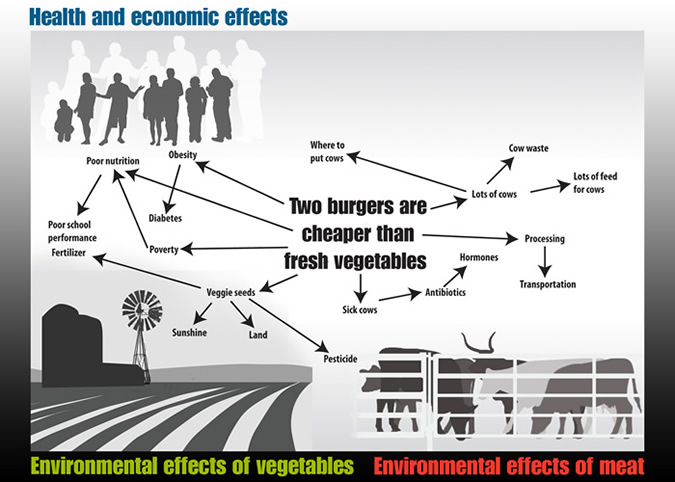Narrowing Your Topic
Using a research plan will help you use your time wisely and avoid the frustration of wading through unnecessary sources. First, you should draft a research question. If you are unsure how to do this, see the lesson “Generating Ideas and Questions about a Research Topic.” Once you’ve created a research question, you will need to figure out which sources you need. Let’s review ways to narrow your topic so that you can craft a research question.
Narrowing through research
Encyclopedia
You might have been warned by your teacher to avoid using the encyclopedia as a source. The problem with using the encyclopedia is that students tend to use this as their only source and often fail to credit the encyclopedia as a source. The encyclopedia, however, is a great source for learning background material about a topic. In the lesson about creating a research question, we used the encyclopedia to learn more about Earth Day.
Internet search
The Internet is another great place to get background information on your topic. A Boolean search is an easy, common way to search. You can use the words “AND,” “OR,” and “NOT” to narrow down the results you get. Suppose you wanted more information about wind farms in Texas. You would search Google or Yahoo for “wind farms AND Texas.” The lesson “Using Databases, Electronic Sources, and Print Sources” has detailed information about performing an Internet search if you need extra help.
While you are narrowing your topic, you can be brief and casual. You only need enough information to direct your research. Also, if you do too much research before you craft your research question, you can become confused or overwhelmed.
Narrowing through brainstorming
In the lesson about creating a research question, we learned a few brainstorming activities. You can also use brainstorming to narrow your topic, create your research question, and write your working thesis. Let’s review the brainstorming activities from that lesson, and then I will give you a couple more activities to use.
Freewriting
When you freewrite, you set a time limit of 10 or 15 minutes and write as much as you can about a subject. Don’t edit yourself or evaluate anything. Just let go and write everything you can about your subject. When you are finished, reread your paragraph and circle or highlight anything you find important or interesting.
Listing
Listing is similar to freewriting except that you simply list everything you can about your subject. Listing usually doesn’t take as long as freewriting. After you have made your list, you cross out the things that don’t work with your research question. What’s left can help to narrow your topic.
Mind mapping
Mind mapping is a technique that is similar to a concept web or clustering. You write your question or topic in the center of a page and then fill the page with words or short phrases. When you are finished, you draw lines between the related words and phrases and write down the way these words are connected to each other and to the central issue.

Source: Mind Map, IPSI
The lesson “Generating Ideas and Questions about a Research Topic" has activities to help you learn each of these methods. Now let’s talk about another method.
Journalistic questions
When journalists write stories, they answer six basic questions: what, who, when, why, where, and how. Let’s say our topic is local water contamination. We can use these questions to narrow our topic. Using your notes, answer the questions what, who, when, why, where, and how about the topic of local water contamination. When you are finished, check your understanding and compare your responses to mine. (It’s OK if your answers take the topic in a different direction.)
Sample Responses:
What: What is water contamination?
Who: Who is contributing to local water contamination?
When: When did the contamination begin?
Where: Where in the city are the effects of water contamination?
Why: Why is the water becoming contaminated?
How: How have businesses contributed to water contamination?
These questions help us start our research. After you have written the questions, choose one or two that you want to learn more about. Doing some brief research will help you decide which question will eventually become your research question. Take, for example, the question “Who is contributing to local water contamination?” You could research the city’s policies on wastewater disposal for refineries and other factories in the area.
Creating a working thesis
After you have narrowed your research question, you need to create what is called a working thesis. A working thesis is a possible answer to your research question. You might think of your working thesis as what you think you want to say about your topic, as opposed to your definitive thesis, which is what you definitely want to say about your topic. A working thesis will probably change as you do more research into your project.
This is important to note: Often research will lead you to a completely different conclusion than you first thought.
One way to arrive at your working thesis is to write a preliminary answer to your research question. Let’s say our research question about the topic of local water contamination is “Can better city policies about wastewater disposal reduce the water contamination? Our working thesis could be “We can reduce water contamination by examining local wastewater disposal policies.” This is the direction you will take your research. You might find, once you’ve read a couple of sources, that local policies have little impact on water contamination. That’s why you use a working thesis.
Once you’ve created a working thesis, your next step will be to gather your sources.